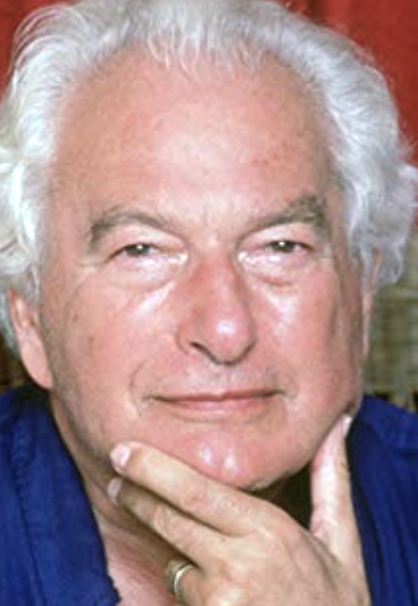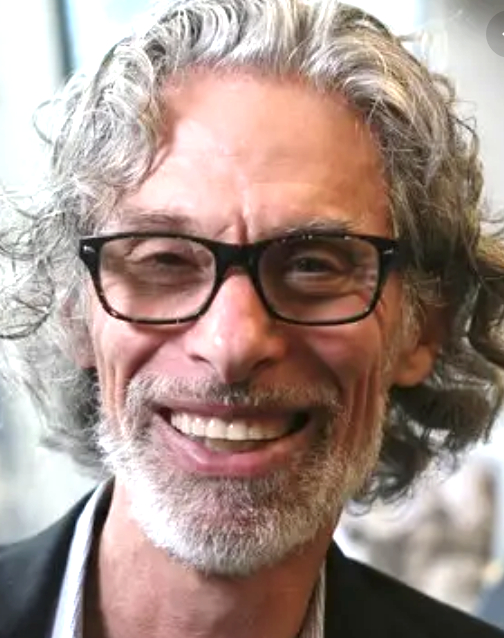May 1
Joseph Heller

On this date in 1923, Joseph Heller was born in Brooklyn, N.Y., to Lena and Isaac Heller, working-class Jewish parents. He enlisted in the U.S. Army Air Force and flew 60 missions as a bombardier in North Africa and Italy. After WW II, Heller graduated from New York University with a B.A. in 1948, earned his M.A. at Columbia in 1949, and was a Fulbright scholar at Oxford in 1949-50. After teaching composition for two years at Penn State University and writing copy for an ad agency, he started writing fiction.
His masterpiece, Catch-22, was published in 1961, to be followed by seven major books, including Something Happened (1974), Good as Gold (1979), which explored his Jewish-American roots, and Now and Then (1998). God Knows is an absurdist deathbed autobiography of King David. He was married to Shirley Held from 1945-81 before divorcing. They had two children, Erica (born 1952) and Theodore (born 1956). He was married to Valerie Humphries from 1987-99.
Heller was paralyzed for a time by Guillain-Barré syndrome. He recovered and co-wrote No Laughing Matter (1986) about his experiences. According to Barbara Gelb (“Catching Joseph Heller,” March 4, 1979, New York Times), Heller was not bar-mitzvahed at 13. Gelb wrote, “Lena Heller was no more religiously inclined than her husband had been. But she was insecure about her nonconformity, and attempted to conceal it.”
In Conversations With Joseph Heller (1993, ed. Adam Sorkin), the agnostic Heller said: “I realize that even if I received convincing physical evidence that there is a God and a heaven and hell, it wouldn’t affect me one bit. I think the experience of life is more important than the experience of eternity. Life is short. Eternity never runs out.”
He died of a heart attack at his home on Long Island at age 76, shortly after completion of his final novel, Portrait of an Artist, as an Old Man. (D. 1999)
“Good God, how much reverence can you have for a Supreme Being who finds it necessary to include such phenomena as phlegm and tooth-decay in His divine system of creation?”
— Heller's protagonist Yossarian in "Catch-22"
Bob Mankoff

On this date in 1944, Robert “Bob” Mankoff, cartoonist, writer and humor enthusiast, was born in New York City. Mankoff grew up in the borough of Queens in a Jewish family. Mankoff graduated from Syracuse University in 1966. He then attended Queens College to pursue a doctorate degree in experimental psychology, but found that his passion was humor.
For two years he submitted around 500 cartoons to The New Yorker without success. After his first submission was published 40 years ago, more than 900 of his cartoons have appeared in The New Yorker. He began The Cartoon Bank in 1991, a database of rejected New Yorker cartoons, which licenses cartoons to use in various media such as textbooks, magazines and newsletters.
The New Yorker purchased the bank in 1997, when he was named New Yorker cartoon editor, where he stayed for 20 years until stepping down in 2017. In 2018 he launched CartoonCollections.com as an archive and online store featuring the cartoons of over 70 illustrators.
Mankoff is credited with creating one of the most reprinted cartoons in The New Yorker’s history. It depicts a businessman at his desk talking on the phone while reviewing his calendar, saying, “No, Thursday’s out. How about never. Is never good for you?” He occasionally pokes fun at religion. In one scene, a man standing in a crowded church entrance says, “Good sermon, Reverend, but all that God stuff was pretty far-fetched.” In another, an obviously Jewish cleric says on the phone, “And remember, if you need anything I’m available 24/6.”
Mankoff has written several books, including his memoir How About Never: Is Never Good For You? My Life in Cartoons (2014) and The Naked Cartoonist: A New Way To Enhance Your Creativity (2002). He edited The Complete Cartoons of the New Yorker (2004) and several other New Yorker collections. He edited The New Yorker Encyclopedia of Cartoons: A Semi-serious A-to-Z Archive in 2018.
Mankoff has taught courses on the science and sociology of humor. He has partnered with the University of Michigan to conduct a series of experiments to study the role of humor in areas of economics, psychology and sociology.
After two prior marriages, Mankoff married Cory Scott Whittier in 1991. They live in New York and have a daughter, Sarah.
“Just to clear up any ambiguity, I'm not a believer, or even agnostic, I'm an atheist (denomination: Jewish). That means the God I don't believe in is different from the God you don't believe in if, for example, you're a Muslim atheist, a Catholic atheist, or a Protestant atheist."
— Mankoff column, "The cosmology of cartoonists," The New Yorker (May 1, 2013)
